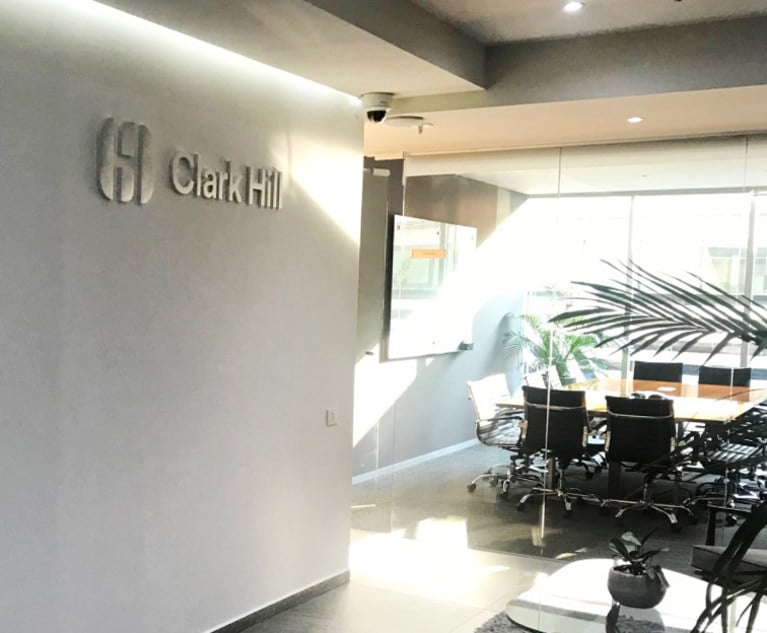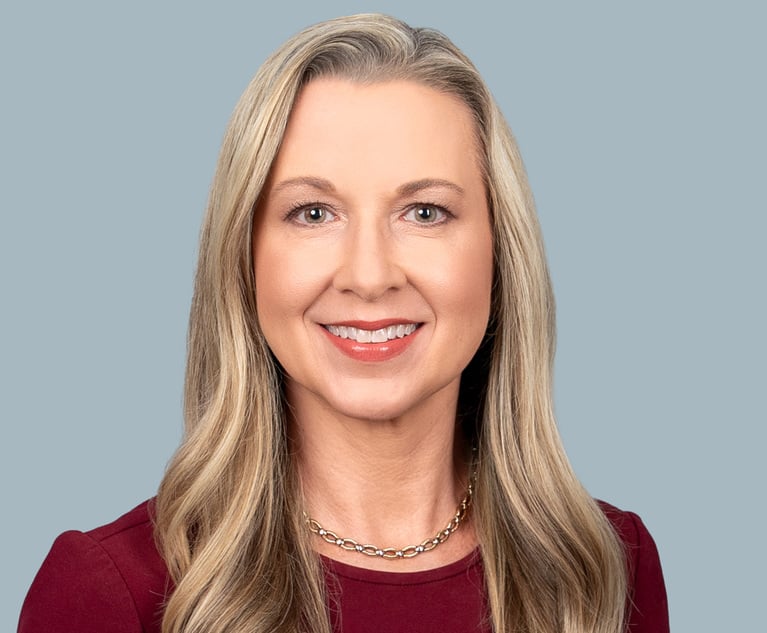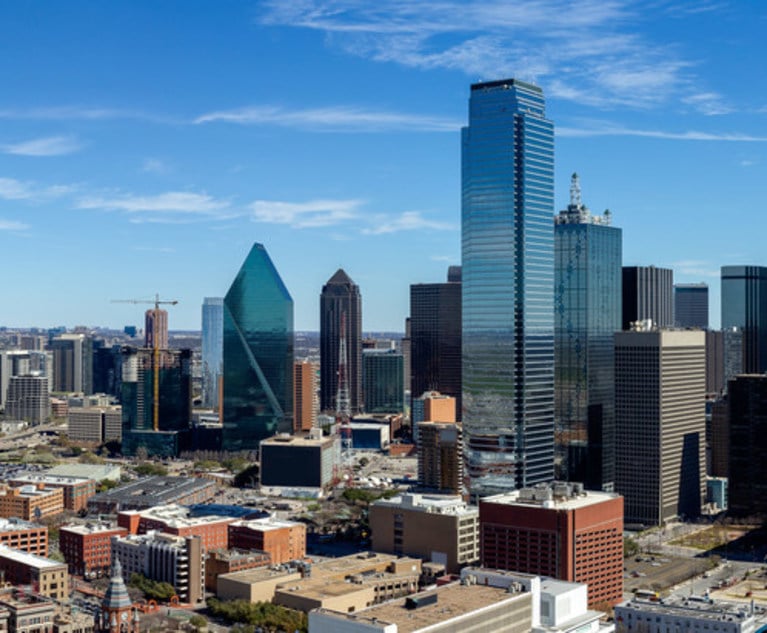 Walter J. Romano, attorney at Patrick Daniel Law.
Walter J. Romano, attorney at Patrick Daniel Law.Premises Liability Cases Are Becoming Increasingly Difficult To Win And Here's Why
As most attorneys reading this article already know, a premises liability cause of action is merely a type of ordinary negligence action. Cases range…
January 21, 2020 at 01:57 PM
7 minute read
As most attorneys reading this article already know, a premises liability cause of action is merely a type of ordinary negligence action. Cases range from the routine "slip and fall" to the more complex, and injuries run the gamut from the relatively minor to the catastrophic. And personal injury lawsuits are on the rise. According to the latest available Judicial Business report, in the U.S. District Courts, 63,564 cases were filed in 2018, which is almost 10,000 more cases than the previous year. Regardless of the seriousness of someone's injury, proving a Defendant's liability and holding someone ultimately responsible for their actions focuses on questions of duty, breach, and proximate cause.
What You Need To Win A Premises Liability Lawsuit
A Plaintiff must prove:
- Actual or constructive knowledge of some condition on the premises by the owner/operator
- That the condition posed an unreasonable risk of harm
- That the owner/operator did not exercise reasonable care to reduce or eliminate the risk; and
- That the owner/operator's failure to use such care proximately caused the plaintiff's injuries.
Keetch v. Kroger
Proving knowledge, (Who? Knew what? When?), is critical. In Keetch v. Kroger, the first element of proof, actual or constructive knowledge of some condition on the premises by the owner or operator, was the key point for this case. Keetch argues that if Kroger created the condition, then Kroger is charged with knowledge of the condition as a matter of law. Keetch's argument is incorrect. The Texas Supreme Court recognized that Keetch's theory was supported by a series of court of appeals opinions. The approach of these courts of appeals is that an owner or occupier has sufficient knowledge of a condition to be liable for the injuries caused by the condition if the plaintiff proves the defendant:
- Put the foreign substance on the floor; or
- Knew that it was on the floor and negligently failed to remove it; or
- That the foreign substance was on the floor so long that it should have been discovered and removed in the exercise of ordinary care
In explaining why the Texas Supreme Court found Keetch's argument incorrect, the Texas Supreme Court concluded that none of the court of appeals opinions relied on the first alternative to establish liability. The fact that the owner or occupier of a premises created a condition that posed an unreasonable risk of harm may support an inference of knowledge. But, the Texas Supreme Court held that a jury still must find that the owner or occupier knew or should have known of the condition. Making the inference as a matter of law is improper unless that knowledge is uncontroverted. Kroger denied knowledge of the condition, so the inference of knowledge could not be made as a matter of law.
Austin v. Kroger
Proving knowledge, (Who? Knew what? When?), proved critical once again in yet another Kroger-related case, Austin v. Kroger. If Keetch can be said to stand for the proposition that when a property owner denies knowledge of an alleged condition then no inference of knowledge can be made as to that condition as a matter of law, then Austin represents the other side of that coin. If a plaintiff can be shown to have even a hint of the condition that led to their injury, then their premises liability cause of action might, as a matter of law, face dismissal as a result of a motion for summary judgment.
Austin did not reach the Texas Supreme Court via the usual appellate route but rather through a certified question from the United States Court of Appeals for the Fifth Circuit. The facts in Austin are relatively straightforward, but the issues are not. Randy Austin fell while mopping a restroom floor at the Kroger store where he worked in Mesquite, Texas. An oily liquid had leaked through the store's ventilation ducts after another Kroger employee power washed the store's condenser units, creating spills in both the men's and women's restrooms. Consistent with Austin's duties as a self-described "floor clean-up person," Austin's supervisor directed him to clean the spills. Kroger's safety handbook recommended that employees clean spills using a "Spill Magic" system that involved a powdery absorbent product, a broom and a dustpan. According to the handbook, using this system reduces the likelihood of a slip-and-fall by 25 percent.
Contrary to the handbook's instruction to store managers, however, the system was not available at the store that day. As a result, Austin attempted to clean the liquid with a mop. He successfully cleaned the women's room and then moved to the men's room, where the brownish liquid covered about 80% of the floor. Recognizing the danger that the slippery liquid presented, he placed "wet floor" signs around the area and carefully took "baby steps" as he moved throughout the spill. After successfully cleaning 30 percent to 40 percent of the spill, Austin slipped in the remaining liquid and fell, fracturing his femur and dislocating his hip. Consequently, he spent nine months in the hospital and underwent six surgeries, leaving his left leg two inches shorter than his right.
The Texas Supreme Court held that outside of the employment context, a landowner sued for premises liability may rely on an invitee's awareness of the dangerous condition as evidence of the invitee's own negligence and proportionate responsibility, as a defense to the invitee's claims. But the court also reaffirmed a landowner's basic premises-liability duty to invitees, which are a duty to:
- Make the property reasonably safe
- Warn invitees of dangerous conditions
- Make the property safe or warn the invitee
The court explained, however, that when the condition is open and obvious or known to the invitee, the landowner is not in a better position to discover it. When invitees are aware of dangerous premises conditions—whether because the danger is obvious or because the landowner provided an adequate warning—the condition will, in most cases, no longer pose an unreasonable risk because the law presumes that invitees will take reasonable measures to protect themselves against known risks. The court further stated, "A landowner "is not an insurer of [a] visitor's safety."
What This Means For The Plaintiff
This holding, in effect, provides the ultimate defense for property owners in those situations where the plaintiff has even the slightest knowledge of the dangerous condition. In a nutshell, it shifts the burden to the plaintiff to prove they did not know about the hazardous condition, thereby relieving the property owner of its legal duty to warn. Some commentators have concluded that this holding effectively reinstates the "no duty" doctrine in Texas, which the Court had abolished nearly forty years ago in Parker v. Highland Park, Inc. (1978). Others have stated that it impacts plaintiff's burden of proof. Following Austin, Plaintiffs have to prove:
- There was an unreasonably dangerous condition on the premises
- The landowner knew, or should have known, about the dangerous condition
- The condition is concealed (i.e. not "open and obvious") and
- The plaintiff was not aware of the danger
Before Austin, plaintiffs only had to prove the first two facts. The addition of facts three and four will make it more difficult for plaintiffs to win in premises-liability cases.
Trends In Favor Of The Defendant
Like the recent shift in Texas appellate courts where "slip and fall" premises liability cases are now being considered by courts as health care liability claims and being dismissed because the Plaintiff failed to meet Chapter 74's 120-day expert report rule, this apparent requirement (that the plaintiff was not aware of the danger) is being more and more relied on by courts to support Defendants' motions for summary judgment.
Walter J. Romano is an attorney at Patrick Daniel Law in Houston.
This content has been archived. It is available through our partners, LexisNexis® and Bloomberg Law.
To view this content, please continue to their sites.
Not a Lexis Subscriber?
Subscribe Now
Not a Bloomberg Law Subscriber?
Subscribe Now
NOT FOR REPRINT
© 2025 ALM Global, LLC, All Rights Reserved. Request academic re-use from www.copyright.com. All other uses, submit a request to [email protected]. For more information visit Asset & Logo Licensing.
You Might Like
View All

Legal Malpractice: Texas Supreme Court OKs 'Pernicious Distortion of Positions'
4 minute read
Ex-Six Flags CLO Lands New C-Suite Post—This Time as HR Chief

Trending Stories
Who Got The Work
Michael G. Bongiorno, Andrew Scott Dulberg and Elizabeth E. Driscoll from Wilmer Cutler Pickering Hale and Dorr have stepped in to represent Symbotic Inc., an A.I.-enabled technology platform that focuses on increasing supply chain efficiency, and other defendants in a pending shareholder derivative lawsuit. The case, filed Oct. 2 in Massachusetts District Court by the Brown Law Firm on behalf of Stephen Austen, accuses certain officers and directors of misleading investors in regard to Symbotic's potential for margin growth by failing to disclose that the company was not equipped to timely deploy its systems or manage expenses through project delays. The case, assigned to U.S. District Judge Nathaniel M. Gorton, is 1:24-cv-12522, Austen v. Cohen et al.
Who Got The Work
Edmund Polubinski and Marie Killmond of Davis Polk & Wardwell have entered appearances for data platform software development company MongoDB and other defendants in a pending shareholder derivative lawsuit. The action, filed Oct. 7 in New York Southern District Court by the Brown Law Firm, accuses the company's directors and/or officers of falsely expressing confidence in the company’s restructuring of its sales incentive plan and downplaying the severity of decreases in its upfront commitments. The case is 1:24-cv-07594, Roy v. Ittycheria et al.
Who Got The Work
Amy O. Bruchs and Kurt F. Ellison of Michael Best & Friedrich have entered appearances for Epic Systems Corp. in a pending employment discrimination lawsuit. The suit was filed Sept. 7 in Wisconsin Western District Court by Levine Eisberner LLC and Siri & Glimstad on behalf of a project manager who claims that he was wrongfully terminated after applying for a religious exemption to the defendant's COVID-19 vaccine mandate. The case, assigned to U.S. Magistrate Judge Anita Marie Boor, is 3:24-cv-00630, Secker, Nathan v. Epic Systems Corporation.
Who Got The Work
David X. Sullivan, Thomas J. Finn and Gregory A. Hall from McCarter & English have entered appearances for Sunrun Installation Services in a pending civil rights lawsuit. The complaint was filed Sept. 4 in Connecticut District Court by attorney Robert M. Berke on behalf of former employee George Edward Steins, who was arrested and charged with employing an unregistered home improvement salesperson. The complaint alleges that had Sunrun informed the Connecticut Department of Consumer Protection that the plaintiff's employment had ended in 2017 and that he no longer held Sunrun's home improvement contractor license, he would not have been hit with charges, which were dismissed in May 2024. The case, assigned to U.S. District Judge Jeffrey A. Meyer, is 3:24-cv-01423, Steins v. Sunrun, Inc. et al.
Who Got The Work
Greenberg Traurig shareholder Joshua L. Raskin has entered an appearance for boohoo.com UK Ltd. in a pending patent infringement lawsuit. The suit, filed Sept. 3 in Texas Eastern District Court by Rozier Hardt McDonough on behalf of Alto Dynamics, asserts five patents related to an online shopping platform. The case, assigned to U.S. District Judge Rodney Gilstrap, is 2:24-cv-00719, Alto Dynamics, LLC v. boohoo.com UK Limited.
Featured Firms
Law Offices of Gary Martin Hays & Associates, P.C.
(470) 294-1674
Law Offices of Mark E. Salomone
(857) 444-6468
Smith & Hassler
(713) 739-1250






